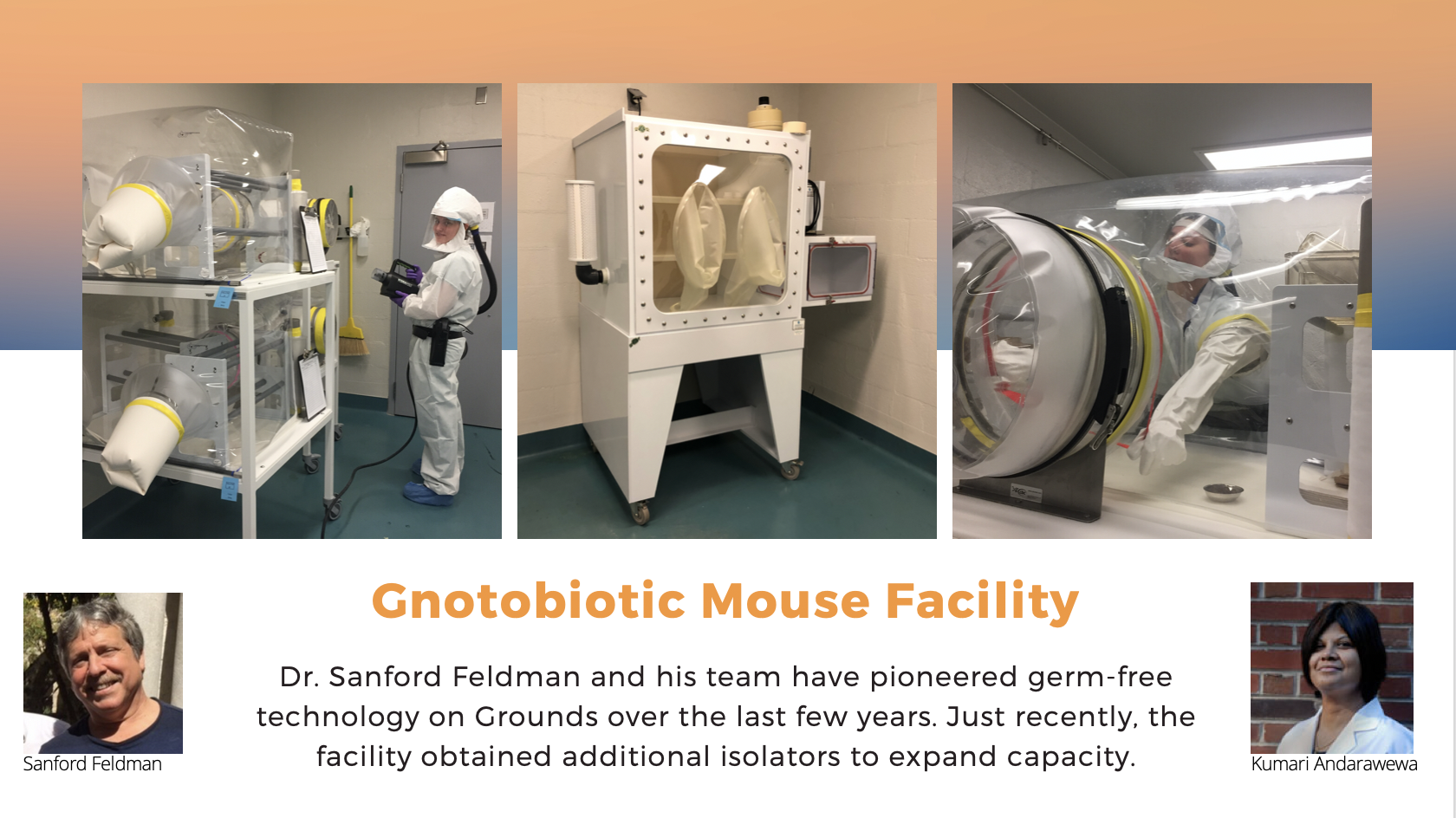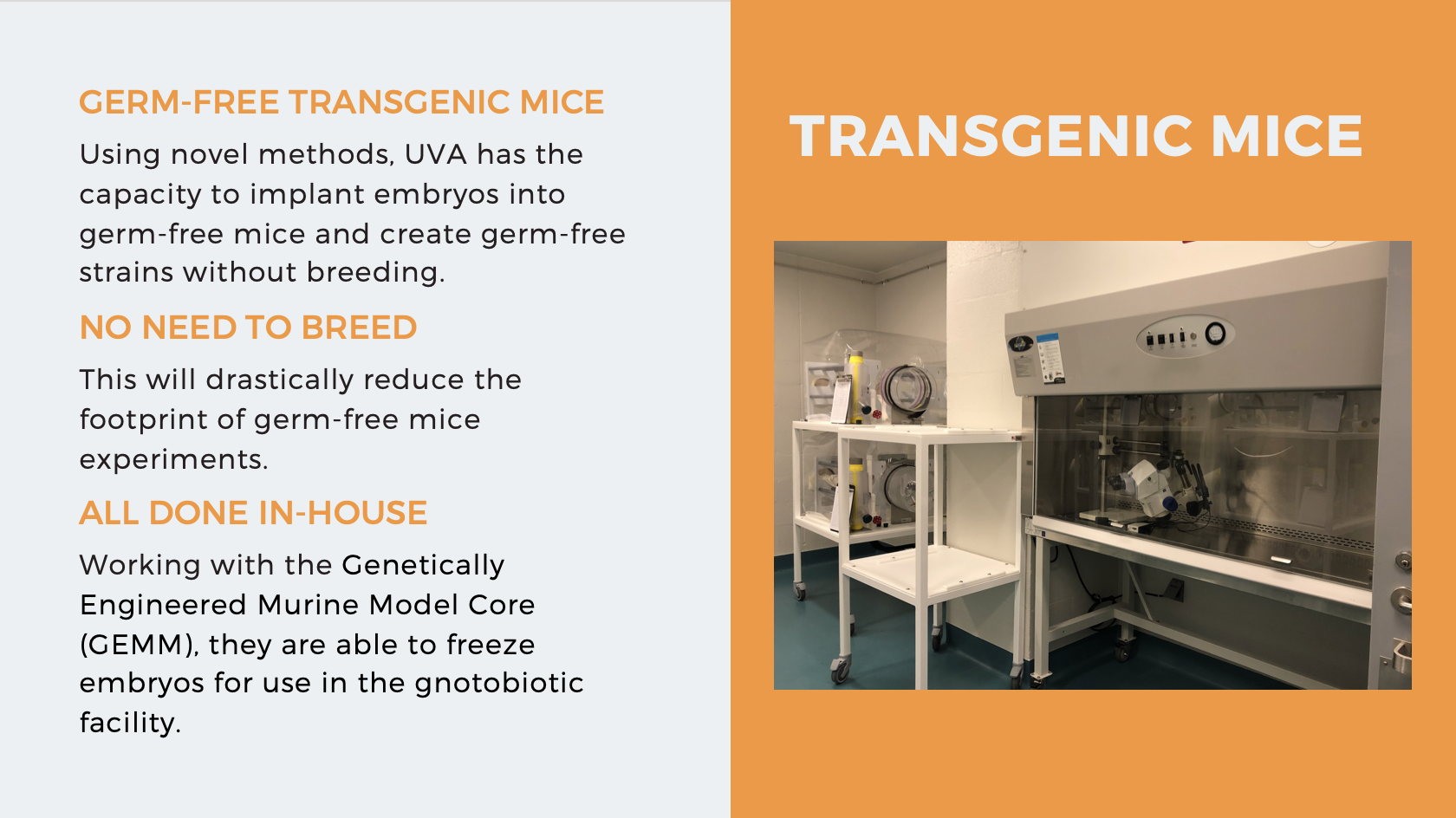Gnotobiotic Animal Center, directed by Sanford Feldman, has obtained equipment through our efforts and those of the Trans-University Microbiome Initiative (TUMI) and the Virginia Equipment Trust Fund to generate and maintain germ-free mice. We are now in our eighteenth month of breeding, maintaining, and validating the germ-free state of these colonies of Swiss Webster and C57BL/6 mice.
The equipment produced by Class Biological Clean (CB Clean, LLC) in our possession is located in the Life Sciences Annex (LISA) at Fontaine Research Park. We maintain four large flexible film isolators for production of germ-free mice, two isolators for each strain in case one isolator should become contaminated and require removal from service. We have forty small flexible film isolators for carrying out experiments distributed in the LISA facility, and have sufficient steam sterilizer capacity to support this activity. Our gnotobiotic facility is producing transgenic animals in a germ-free state for experiments as well, germ-free transgenic strains are maintained as cryopreserved embryos and produced by trans-cervical embryo transfer as needed for experiments.
Germ-free mice that are used in experimentation are transferred to “semi- rigid” isolators where they are associated with microbial flora that constitutes the experiment of the researcher in question. Only a single experimental microbial association can be done in one semi-rigid isolator, which is then solely dedicated to the experiment for its duration. Currently we have two semi-rigid isolators for this purpose. In addition to the semi-rigid isolators, an alternative method of housing germ-free mice that have been associated with a specific microbiome is in biocontainment caging. We have unused biocontainment caging sufficient to hold 72 boxes of mice. Each box can then represent a unique microbiome-associate for the duration of a particular experiment.
In association with TUMI, the Gnotobiotic Animal Core will: a) expand cage capacity, b) allow Veterinary Services to rederive transgenic mice into germ-free conditions, and c) provide germ-free enclosures at other locations across the University to receive mice in biocontainment caging from the main facility at Fontaine prior to experimentation. Anaerobic, microaerophilic, and fermenter capacity will be coordinated to allow for the isolation and culture of difficult to grow members of bacterial communities. Because the microbiome encompasses far more than bacteria, this capacity will also allow ultimately allow us to incorporate studies of the virome and fungome to complement TUMI.
In addition to the expansion of resources, TUMI will also subsidize experiments in the Gnotobiotic Animal Core through the award of TUMI pilot and feasibility grants, making the use of the Core less costly to users.


